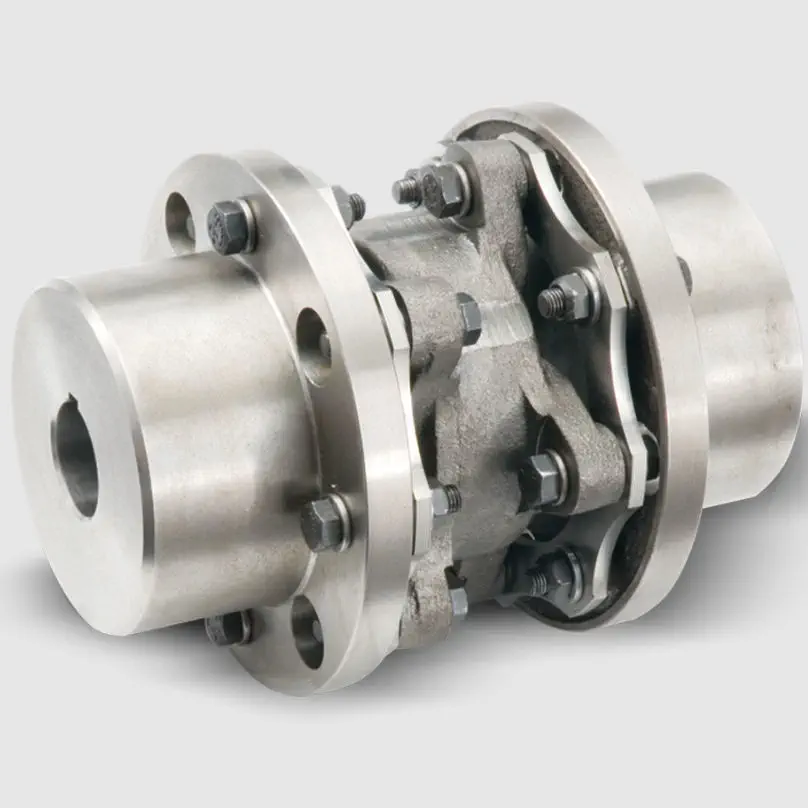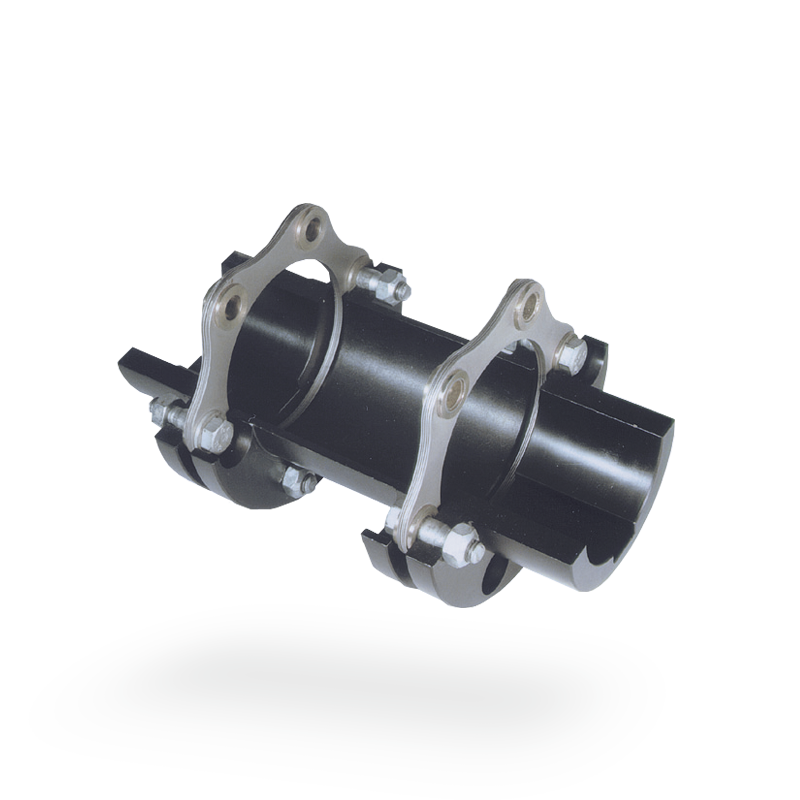Product Description
SG7-8 Single plate springs clamp type flexible disc couplings
Product Description
| Item No.: |
|
|||||||
| Features: |
|
|||||||
| Specification: |
|
|||||||
| Application: |
|
|||||||
| Delivery: |
|
|||||||
| Remark: |
|
|||||||
Product Picture
Drawing:
/* January 22, 2571 19:08:37 */!function(){function s(e,r){var a,o={};try{e&&e.split(“,”).forEach(function(e,t){e&&(a=e.match(/(.*?):(.*)$/))&&1

Comparison of Disc Couplings with Other Coupling Types
When comparing disc couplings with other coupling types like jaw couplings and elastomeric couplings, several factors come into play:
- Flexibility: Disc couplings offer high flexibility and misalignment compensation, similar to elastomeric couplings, making them suitable for applications with angular, axial, and parallel misalignment.
- Torsional Stiffness: Jaw couplings are known for their high torsional stiffness, which is suitable for precision applications. Disc couplings offer a balance between flexibility and stiffness.
- Misalignment Compensation: Disc couplings excel in accommodating misalignment, whereas elastomeric couplings and jaw couplings are better suited for lower degrees of misalignment.
- Vibration Damping: Elastomeric couplings provide excellent vibration damping due to their rubber elements. Disc couplings can also dampen vibrations to some extent.
- Compactness: Jaw couplings and elastomeric couplings are relatively compact, making them suitable for space-constrained applications. Disc couplings are larger in size but offer higher torque capacity.
- Torque Capacity: Disc couplings generally have higher torque capacity compared to elastomeric couplings and jaw couplings.
- Installation and Maintenance: Disc couplings and elastomeric couplings are typically easier to install and require less maintenance compared to jaw couplings.
- Material Options: All three coupling types are available in various materials, allowing for compatibility with different environments.
The choice between disc couplings, jaw couplings, and elastomeric couplings depends on the specific requirements of the application, including torque, misalignment, vibration, and stiffness considerations. Each coupling type has its strengths, and selecting the right one involves evaluating these factors to achieve optimal performance and reliability.

Recent Advancements in Disc Coupling Design
Disc coupling technology has seen continuous advancements to enhance performance, reliability, and adaptability to various applications. Some recent innovations in disc coupling design include:
- Material Enhancements: The development of new materials, such as advanced alloys and composite materials, has improved coupling durability, corrosion resistance, and overall lifespan.
- Flexible Disc Profiles: Innovative disc profiles are designed to optimize flexibility while maintaining torque transmission capabilities, allowing for better misalignment compensation and shock absorption.
- Modular Designs: Modular disc coupling systems offer flexibility in adapting to different torque and misalignment requirements, making them versatile for a wide range of applications.
- Enhanced Torsional Stiffness: Some designs focus on achieving higher torsional stiffness, ensuring accurate torque transmission and responsiveness even in demanding conditions.
- Smart Couplings: Integration of sensor technology enables real-time monitoring of coupling performance, allowing for predictive maintenance and reducing downtime.
These advancements are driven by the increasing demands of modern machinery and the need for higher efficiency, reduced maintenance, and improved overall system performance. Engineers and manufacturers are continually exploring new ways to optimize disc coupling design for a variety of industries and applications.

Disc Couplings: Function and Application in Mechanical Systems
A disc coupling is a type of flexible coupling used in mechanical systems to connect two shafts while allowing for angular misalignment, axial movement, and some degree of torsional flexibility. It consists of two hubs with flexible metallic discs, known as diaphragms, positioned between them.
Disc couplings are commonly utilized in various industrial applications where precise power transmission, reliability, and flexibility are essential. Some key features and applications of disc couplings include:
- High Torque Transmission: Disc couplings are designed to transmit high torque loads between shafts while maintaining shaft alignment. The flexible diaphragms can accommodate misalignments and prevent torque overloads on connected equipment.
- Angular Misalignment Compensation: The design of disc couplings allows them to handle angular misalignment between shafts, which can occur due to manufacturing tolerances or dynamic conditions.
- Axial Movement Absorption: Disc couplings can absorb limited axial movement along the shaft axis without transferring excessive forces to the connected components.
- Torsional Flexibility: The metallic diaphragms of disc couplings offer torsional flexibility, enabling them to dampen vibrations and shock loads. This helps protect connected equipment from damage and increases overall system reliability.
- Precision Machinery: Disc couplings are often employed in precision machinery and equipment, such as CNC machines, robotics, pumps, compressors, and servo systems. These applications require accurate motion control and reliable power transmission.
- High-Speed Applications: Due to their balanced design and ability to maintain precise alignment, disc couplings are suitable for high-speed applications where even a small misalignment can lead to vibration and wear.
The ability of disc couplings to provide both flexibility and precise torque transmission makes them a preferred choice in various industries, including manufacturing, aerospace, automotive, and more. Proper selection, installation, and maintenance of disc couplings contribute to improved machinery performance, reduced downtime, and extended component life.


editor by CX 2024-04-12